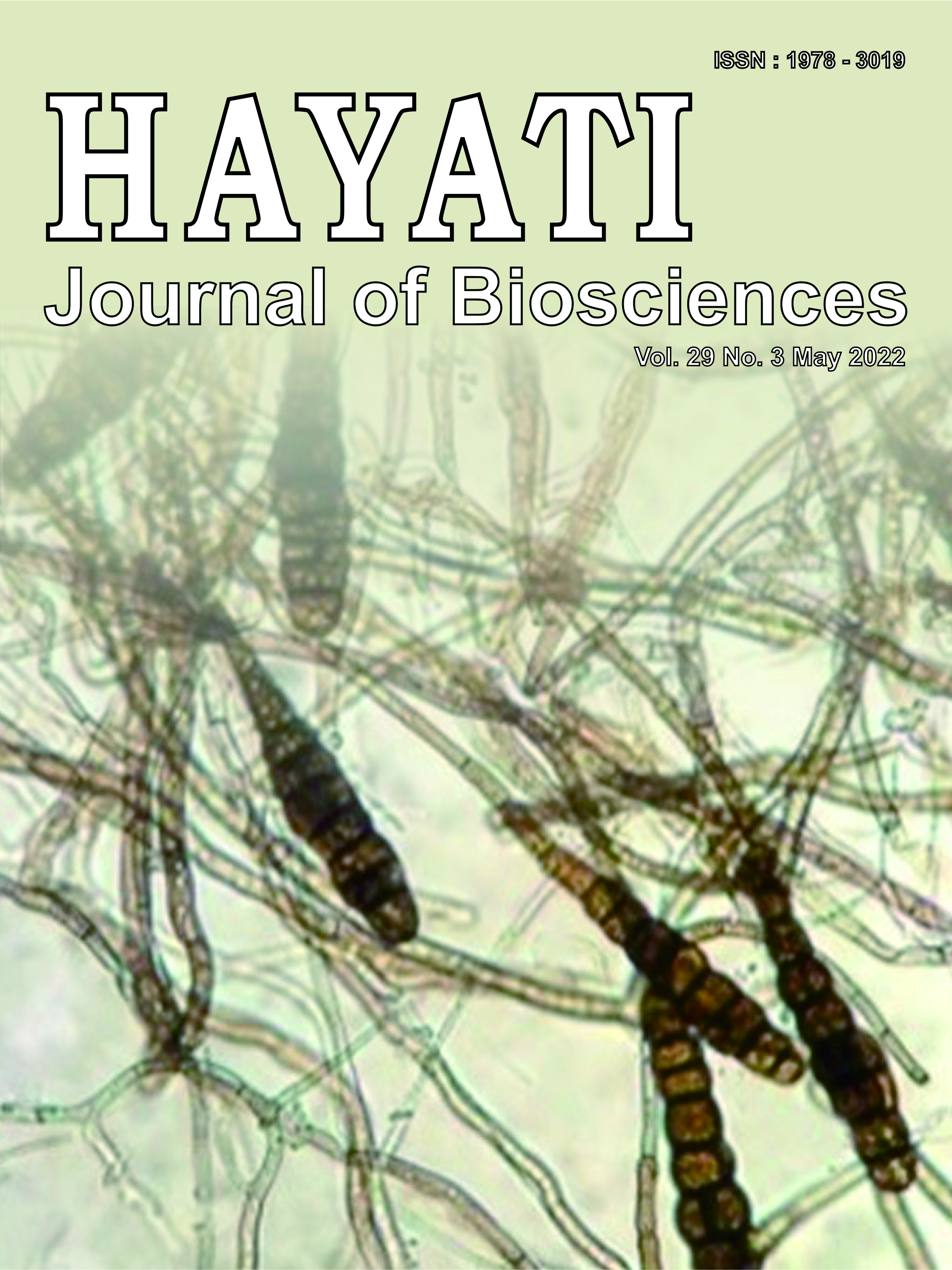Allometric Model, Aboveground Biomass and Carbon Sequestration of Natural Regeneration of Avicennia lanata (Ridley). at in-active Pond of Muna Regency, Southeast Sulawesi
Abstract
This study aimed to establish an allometric model for estimation of aboveground biomass, and carbon sequestration in A. lanata mangrove forest growing in Muna Regency, Southeast Sulawesi. Research methods were done by transect and 5 quadrats with size of 100 m2 each. A total of thirteen individual trees with different sizes were harvested. While DBH and D30 were measured. The samples were separated into stems, branches, and leaves and then weighted. The sample from each fresh organs were taken and brought to the Laboratory and then oven dried at 80°C for 7 days. The allometric equations were established by using independent variables (DBH and D30), and dependent variables (Ws, Wb, Wl). The partial and overall aboveground biomasses were calculated from allometric model, while carbon stock and CO2 sequestration were estimated. The results showed that the independent variable of DBH was more applicable for estimation of Ws, Wb, Wl, and total biomasses (Mg ha-1) of A. lanata forest, which were estimated as 28.28±3.48, 6.40±0.79, 5.00±0.66, and 40.08±4.97 respectively. The carbon stock in stems (13.24±1.63 Mg ha-1) was higher than in branches (3.01±0.37 Mg C ha-1) as well as in leaves (2.35±0.31 Mg C ha-1). The total of carbon stock were estimated at about 18.83±2.33 Mg C ha-1. Meanwhile, the total of CO2 absorption by A. lanata mangrove was 43.95±5.45 Mg CO2 ha-1. Therefore a regenerated A. lanata mangrove in this in-active pond area had potentiality on carbon stock and sequestrations, although these vegetation condition was still in the growth stage.
Downloads
Copyright (c) 2022 Fajar Hasidu, Arif Prasetya, Maharani Maharani, Muhammad Syaiful, Kangkuso Analuddin

This work is licensed under a Creative Commons Attribution-NonCommercial 4.0 International License.
HAYATI J Biosci is an open access journal and the article's license is CC-BY-NC. This license lets others distribute, remix, tweak, and build upon author's work, as long as they credit the original creation. Authors retain copyright and grant the journal/publisher non exclusive publishing rights with the work simultaneously licensed under a https://creativecommons.org/

























.png) IPB University
IPB University Department of Biology
Department of Biology The Indonesian Biological Society
The Indonesian Biological Society 

